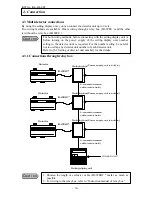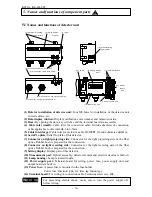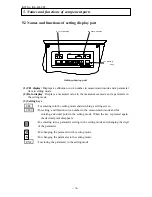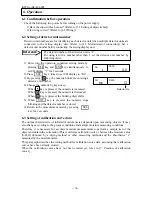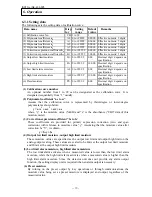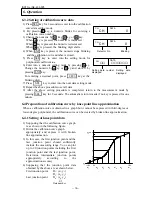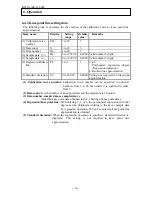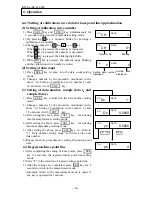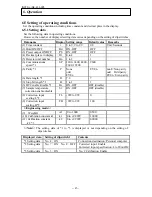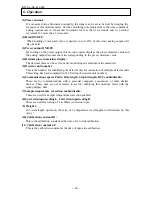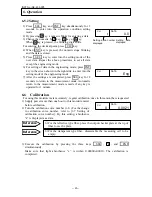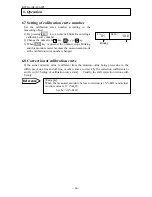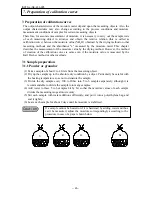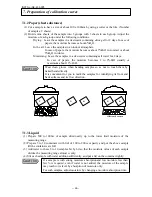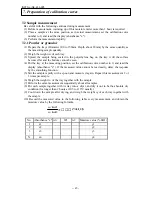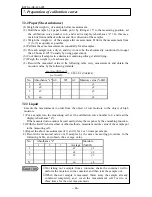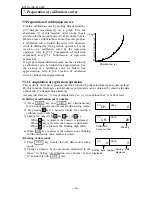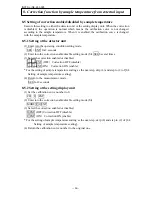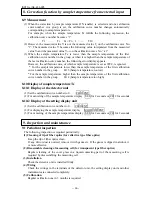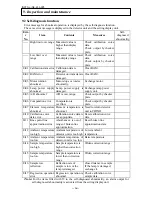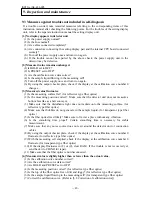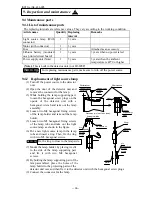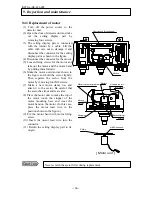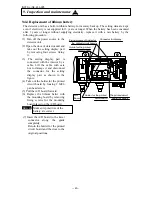
INST No INE -403-0P0
−
26
−
7.1.2 Paper (sheet substance)
(1) Cut a sample to have a size of about 100 x 100mm by using a cutter or the like. (Number
of samples: 9 sheets)
(2) Divide nine sheets of the sample into 3 groups with 3 sheets in each group. Adjust the
moisture of each group under the following conditions.
Drying : Leave the samples in a desiccator containing silica gel for 2 days. In case of
papers, the moisture becomes about 4%H
2
O.
In the air: Leave the samples in an indoor atmosphere.
In case of papers, the moisture becomes about 7%H
2
O in summer or about
5%H
2
O in winter.
Moistening: Leave the samples in a desiccator containing salt water for 2 days.
In case of papers, the moisture becomes 8 to 9%H
2
O usually or
maximum about 11% H
2
O.
7.1.3 Liquid
(1) Prepare 500 to 1000cc of sample dried nearly up to the lower limit moisture of the
measuring range.
(2) Prepare 5 to 10 containers (with lid) of 100 to 200cc capacity and put the above sample
till the containers are full.
(3) Add water to these 5 to 10 samples bit by bit so that the moisture values of each sample
divides the measuring range almost evenly.
(4) Stir each sample with water addition sufficiently, and put a lid on the container tightly.
Wear clean gloves when handing samples so as not to touch them by
naked hands directly.
It is convenient for you to mark the samples for identifying its front and
back surfaces and its flow direction.
C a u t i o n
If a sample is with strong moisture absorption and low moisture less than
few % is required, even if water is not added, the moisture of the sample
may reach to its level by absorption of moisture only.
For such samples, adjust moisture by changing a moisture absorption time.
C a u t i o n
7. Preparation of calibration curves
1
2
3
4
5
6
With silicagel
With salt water

